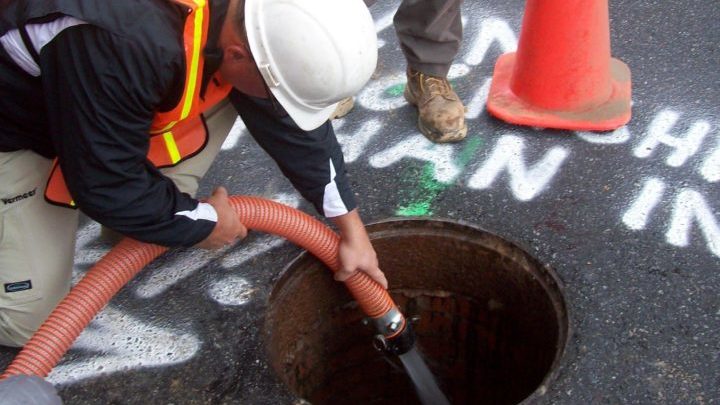In the five years since it was launched, the AXIS guided boring system has performed countless trenchless pipe installations around the world. AXIS inventor and Edge Underground Managing Director Stuart Harrison reflects on the system’s achievements to date, and his ongoing development of this unique installation method.
The Vermeer AXIS guided boring system was launched at the International No-Dig Conference in Toronto in March 2009, where it went on to win the Innovative New Product of the Year Award in the New Construction category.
The AXIS system is a pit-launched trenchless installation method designed to achieve pinpoint, on-grade accuracy while eliminating some of the difficult steps associated with other installation techniques. A wide range of product pipe, sizing specifications, and other jobsite requirements can be met with the versatile capabilities of the AXIS system.
The system gives on-grade accuracy and high efficiency, while minimizing restoration and installation costs. These characteristics have seen the AXIS system used on many a jobsite around the world in the past five years, and the system has developed a reputation for getting the job done, every time.
“When we first designed the AXIS guided boring system, it was intended for use with pipe up to 12 inches (300 mm) in diameter,” recalled AXIS inventor Stuart Harrison.
“But since we launched AXIS in 2009, the product has been continuously evolving. From our initial benchmark of 300 mm pipelines, we now regularly install pipe in to 300-600 mm range, and to date, our largest ever installation was of a 900 mm pipeline.”
And according to Mr Harrison, it’s not just in the size of pipe that can be installed that the AXIS continues to evolve.
“When we initially launched AXIS, a lot of people though it would only be suitable for use in self-supporting ground. However over the course of the last five years, we’ve repeatedly proved that AXIS can be used in all variety of ground conditions, including below the water table.
“Those sort of conditions would have once required an earth pressure balance tunnel boring machine. But we’ve developed an earth pressure balance head that runs on the AXIS machine so that it can be used in flowing water ground conditions.
“With the growth in the size of pipe that can be installed, combined with the variety of ground conditions it can handle, AXIS is becoming a one-stop shop for all manner of pipe installation jobs,” said Mr Harrison.
“It’s a versatile machine that handles virtually all conditions. Every job it’s put in front of – we get it done.”
One particularly notable job over the system’s five year history was in the central business district in Melbourne, Australia.
The AXIS system was used to install 427OD Hobas jacking pipe to install over 300 m of gravity sewers on minimal grades. It was a challenging job for many reasons – particularly the location, within 30 m of the Yarra River and three metres below the water table.
The method was not only able to handle the soft wet silt, but it was also able to drill through the pylons and rubble present throughout the job. In the past these conditions would have required the removal of these obstructions, however the AXIS system was able to complete all lines without the need to remove any obstructions.
The future for AXIS
Mr Harrison said a huge part of his work with Edge Underground (of which he is Managing Director) comes back to the ongoing research and development of the AXIS system.
“In the last five years, AXIS has grown in terms of the size of pipe it can install, and its capabilities, and I see this as being a continual process,” said Mr Harrison.
Mr Harrison spends a considerable portion of his year travelling to international no-dig shows to assess the latest technical advancements around the world, and consider how these can be adapted to the AXIS system and brought into the Australian market.
The major development Mr Harrison is currently working on is a new back reamer for the system, which could see AXIS installing pipe up to 1.2 m in diameter. He is also working to improve the system’s sustainability credentials, with a current focus on reducing the amount of slurry waste produced by the machine. He is also about to commence trials that will see the water used by the system recycled.
“We’re constantly working on the AXIS system to develop is capabilities and ensure the system is as friendly to users and the environment as possible.
“As far as I can see, with AXIS, the sky’s the limit.”

